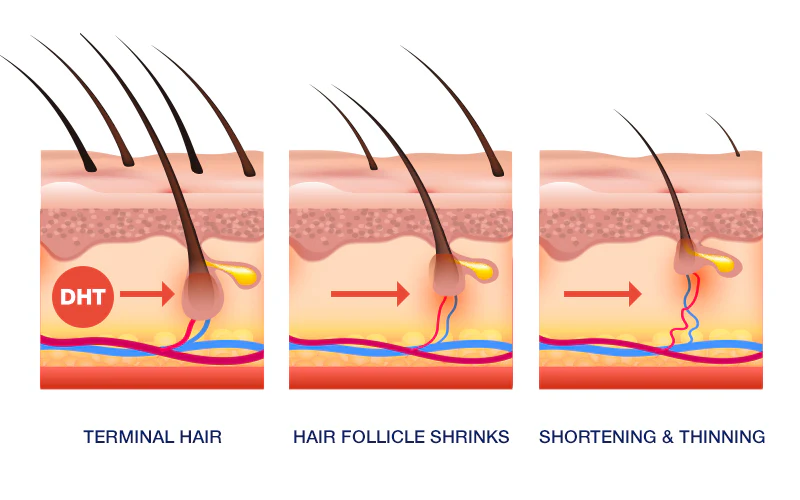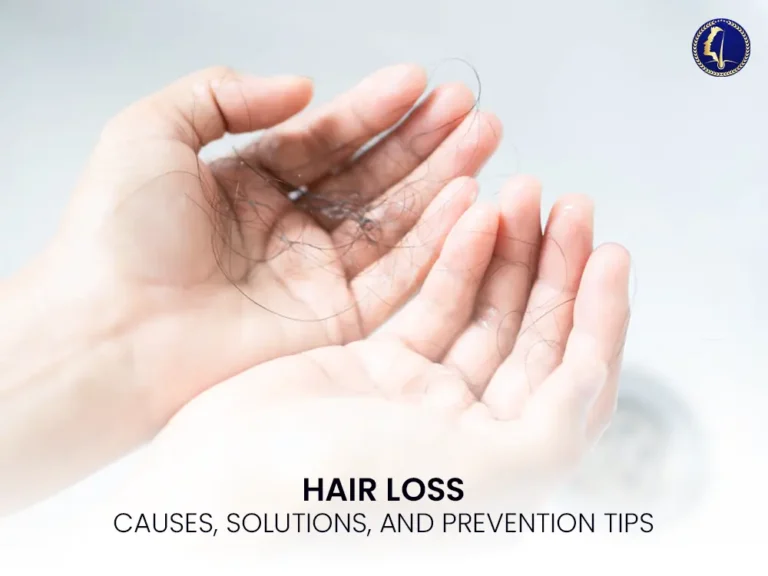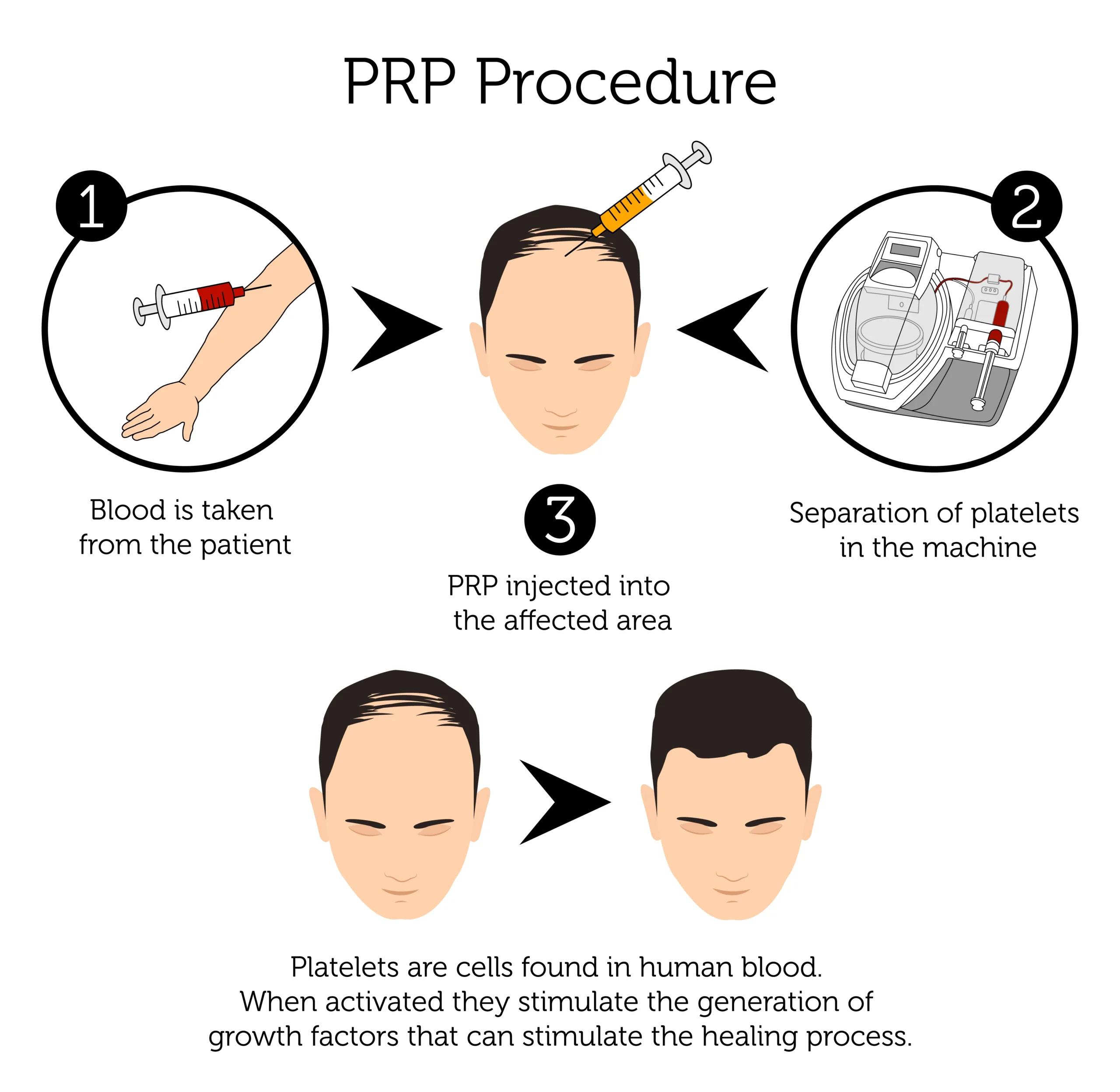Hair Loss
Hair loss, or alopecia, affects millions of men and women globally. Whether you’re noticing a thinning crown, excessive shedding in the shower, or bald patches appearing unexpectedly, it’s a condition that often causes concern and affects self-confidence. Understanding the root causes and identifying effective solutions is the first step in taking control of your hair health.
In this expert-backed guide, we’ll explore what causes hair loss, the different types, proven treatment options, and prevention strategies.
What Is Hair Loss?
Hair loss occurs when the cycle of hair growth and shedding is disrupted. On average, individuals lose 50 to 100 hairs per day, which typically go unnoticed as new hair grows in. However, when new hair fails to replace the lost strands, noticeable thinning or baldness begins.
There are two broad categories:
Temporary Hair Loss – Often due to stress, illness, or medication.
Permanent Hair Loss – Usually genetic or due to scarring conditions.
Understanding the cause is critical to determining the right approach for recovery.
Top Types of Hair Loss (Recognizing the Condition)

1. Androgenic Alopecia
Also known as male-pattern or female-pattern baldness, this is the most common cause of hair loss. It’s genetically inherited and worsens over time. Men experience receding hairlines and crown balding; women typically see overall thinning and a wider part.
2. Alopecia Areata
This autoimmune condition causes sudden, patchy hair loss on the scalp or body. It may resolve on its own or require immune-modulating treatments.
3. Telogen Effluvium
Triggered by stress, surgery, childbirth, or illness, this condition causes hair to prematurely enter the resting phase and shed in clumps.
4. Traction Alopecia
Results from hairstyles that pull on the scalp (tight ponytails, braids, cornrows). Long-term tension can damage follicles permanently.
5. Frontal Fibrosing Alopecia
A less common form that causes hairline recession, particularly in post-menopausal women. Early treatment can help reduce permanent loss.
What Causes Hair Loss?

Hair loss isn’t always about heredity. Several contributing factors interact in complex ways:
Hormonal changes: Pregnancy, menopause, thyroid issues.
Medical treatments: Chemotherapy, antidepressants, blood pressure meds.
Nutritional deficiencies: Iron, zinc, vitamin D, and protein are essential.
Scalp infections: Ringworm and other fungal issues.
Stress & trauma: Physical or emotional stress can halt growth temporarily.
Hairstyling habits: Heat styling, chemical treatments, and tight hairstyles weaken follicles over time.
Underlying health issues: Autoimmune diseases, PCOS, lupus, and diabetes can lead to shedding.
Effective Hair Loss Treatments
✅ Minoxidil (Rogaine)
An over-the-counter topical treatment approved for both men and women. It stimulates growth and slows further loss. Results appear in 3–6 months.
✅ Finasteride (Propecia)
A prescription-only oral medication for men. It blocks DHT, a hormone linked to follicle shrinkage.
✅ Platelet-Rich Plasma (PRP) Therapy
A promising treatment where your blood’s growth factors are injected into the scalp. Stimulates dormant follicles.
✅ Hair Transplant Surgery
Follicles are moved from dense areas to bald spots. Costly but permanent and natural-looking when done correctly.
✅ Laser Therapy
Low-level laser devices help stimulate blood flow and hair follicles. FDA-cleared for hair growth in some users.
Natural Remedies for Hair Loss
While not cures, these evidence-supported options may help:
Biotin: Strengthens hair shafts.
Rosemary oil: Comparable to minoxidil in some studies.
Pumpkin seed oil: May reduce DHT production.
Scalp massage: Enhances blood circulation.
Balanced diet: Include leafy greens, eggs, nuts, and seeds.
Prevention Tips That Actually Work
Use a wide-toothed comb to minimize breakage.
Avoid wet brushing — hair is most fragile when wet.
Limit heat styling and harsh chemical treatments.
Protect your scalp from UV exposure with hats or SPF sprays.
Avoid tight hairstyles that cause traction on follicles.
Quit smoking — linked to hair follicle damage.
Manage stress with meditation, sleep, or therapy.
Consult a dermatologist early if symptoms persist.
When to See a Doctor
Sudden or patchy hair loss.
Bald patches on the beard or eyebrows.
Red, scaly patches on the scalp.
Hair loss after starting new medication.
Hair thinning that progresses despite at-home care.
An early diagnosis can make treatment more effective and prevent further loss.
FAQs About Hair Loss
Q1: Can hair grow back after thinning?
Yes, if the cause is temporary (like stress or nutritional deficiency), hair often regrows. Early treatment boosts chances.
Q2: Does shampoo cause hair loss?
No direct evidence supports this, though harsh ingredients may irritate the scalp and worsen conditions.
Q3: How long does it take for treatment to show results?
Most treatments take 3–6 months to show visible changes. Consistency is key.
Q4: Is it normal to lose hair after pregnancy?
Yes, postpartum shedding is common and usually resolves within 6–12 months.
Q5: Are there side effects to using Minoxidil or Finasteride?
Minoxidil may cause scalp irritation. Finasteride can cause sexual side effects in a small percentage of men.
Final Words: Take Charge of Your Hair Health
Hair loss can be a stressful and emotional journey, but it’s not one you have to face alone. With so many treatment options — both medical and natural — you have tools to combat hair loss at every stage. Early detection, expert guidance, and a proactive approach can make all the difference.
If you’re struggling with persistent shedding or thinning, consult a board-certified dermatologist or trichologist today. Your hair is part of your identity — it’s worth protecting.


